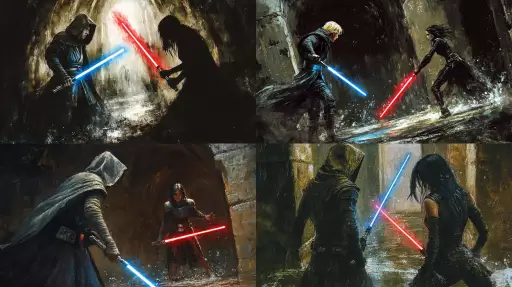Explore the Best AI Image Gallery

Imagining Reality: AI-Generated Images and the Evolving Art World
The art world is undergoing a radical transformation, fueled by the emergence of artificial intelligence (AI). AI-generated images, once confined to the realm of science fiction, are now a tangible reality, capable of producing breathtakingly realistic and imaginative visuals. This new technology is sparking both excitement and debate, raising profound questions about the nature of creativity, the role of the artist, and the future of art itself.
A New Creative Frontier: Exploring the Potential
AI-powered image generation tools offer artists and designers a powerful new set of instruments. They can be used to:
- Concept Exploration: Generate a multitude of visual ideas rapidly, overcoming creative blocks and exploring diverse stylistic directions.
- Visual Storytelling: Craft immersive narratives through a series of AI-generated images, pushing the boundaries of traditional storytelling formats.
- Personalized Art Experiences: Create unique artworks tailored to individual preferences, allowing for a level of customization previously unimaginable.
- Accessibility in Artmaking: Empower individuals with limited artistic skills to express themselves creatively through AI-assisted tools.
The Ethical Landscape: Navigating Uncharted Territory
While the potential of AI-generated images is undeniable, it also presents a range of ethical challenges:
- Authorship and Ownership: Who owns the copyright to an artwork created by an AI? The programmer, the user who provided input, or the AI itself?
- Bias and Representation: AI algorithms are trained on vast datasets, which may contain inherent biases that reflect societal prejudices. This can result in AI-generated images perpetuating harmful stereotypes.
- Job Displacement: Could AI-powered image generation tools displace human artists and designers, leading to economic hardship?
- Authenticity and Deception: The ability to create hyperrealistic images raises concerns about the potential for misuse, such as creating deepfakes for malicious purposes.
Shaping the Future: A Collaborative Path Forward
The future of AI-generated images in art is still unfolding. It requires a thoughtful and collaborative approach involving artists, technologists, policymakers, and the public.
- Transparency and Accountability: Developers of AI image generation tools should be transparent about their algorithms and data sources to address concerns about bias and ownership.
- Education and Awareness: Fostering public understanding of AI technology and its implications for the art world is crucial.
- Ethical Guidelines and Regulations: Establishing clear ethical guidelines and regulations can help mitigate potential risks and ensure responsible development and use of AI in art.
- Artistic Exploration and Experimentation: Encouraging artists to embrace AI as a new medium for creative expression and innovation.
AI-generated images have the potential to revolutionize the art world, offering exciting possibilities for artistic creation, storytelling, and collaboration. However, it is essential to navigate the ethical challenges thoughtfully and ensure that this transformative technology serves humanity in a positive and meaningful way.





](https://images.ai-img.art/thumbnails/150/bddf3ae4a232290858389b933c866ad3be429ef2e25c23a9f4d7713ed6e44d0b.webp)






](https://images.ai-img.art/thumbnails/150/008b5d5d49667cc2e93a5f8a8adfaa545963da99c39ff0901f5296294636400d.webp)

](https://images.ai-img.art/thumbnails/150/f67d9af3398150f2ab1bcf250717fea134275e2ca896252b54a4d9bb3719f9ac.webp)



](https://images.ai-img.art/thumbnails/150/f9584153b4cddd8c9fab611dc10247549b275c59bc173251e37d0935874f9deb.webp)
](https://images.ai-img.art/thumbnails/150/4289d1230b86a96c4d556636c3167bed0ef38f850826549517e4e45db4d87bf7.webp)








](https://images.ai-img.art/thumbnails/150/c2c9c48b38fae37f0a457b80b084ed01ba803810fc8f488c8f610c03abc74049.webp)












